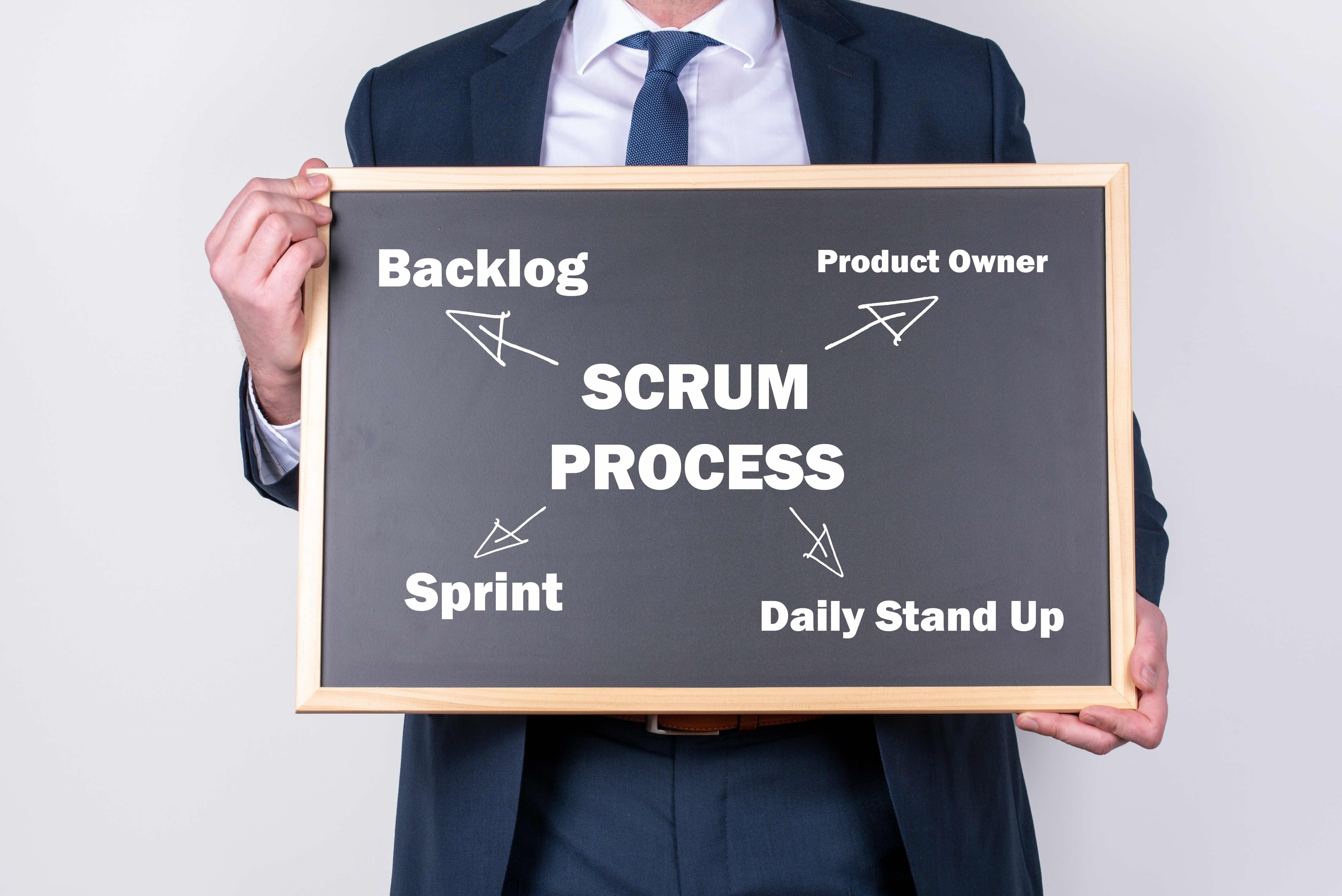Understanding Agile, Scrum & Software Development Lifecycle
Software development isn’t just about writing code—it’s about delivering value efficiently, reliably, and with a structure that adapts to changing requirements. If you've worked in tech for any amount of time, you've likely heard about Agile, Scrum, and the Software Development Lifecycle (SDLC). But what do these terms truly mean in practice? More importantly, how do they help engineers build better software?
Let’s break them down and explore how understanding these concepts can elevate your effectiveness as a software engineer.
The Software Development Lifecycle (SDLC): A Foundation for Engineering Discipline
The Software Development Lifecycle (SDLC) is a structured approach to software creation. It provides a framework that helps teams manage complexity and reduce risks while ensuring quality and predictability. While different variations exist, most modern software development still follows these fundamental SDLC stages:
- Planning – Understanding the problem, defining objectives, and assessing feasibility.
- Requirements Analysis – Gathering functional and non-functional requirements from stakeholders.
- Design – Creating architectural plans, UI/UX mockups, and system blueprints.
- Development – Writing and testing the code in an iterative manner.
- Testing – Ensuring quality through unit, integration, and system tests.
- Deployment – Releasing the software to production. Engineers should be mindful of deployment best practices, such as feature flags and rollback plans, to minimise risk.
- Maintenance – Addressing bug fixes, optimising performance, and ensuring software remains secure and scalable over time.
Understanding SDLC helps engineers see beyond just coding. While SDLC provides the structure for software creation, its traditional implementations sometimes struggle with adaptability. This is where Agile comes in—offering a more iterative and flexible approach within the broader SDLC framework. By understanding how each phase connects, engineers can improve collaboration, minimise rework, and ensure that their work aligns with both technical and business goals.
Agile: A Mindset, Not Just a Process
Traditional SDLC approaches, such as Waterfall, relied on rigid, linear processes that often failed to accommodate changes. Imagine a scenario where a team spends months building a feature based on initial assumptions, only to realise late in the cycle that user needs have changed. That’s the risk of rigid planning without adaptability—teams can invest heavily in solutions that no longer align with reality. In contrast, Agile would have allowed for continuous course correction. Agile emerged as a response to these challenges, offering a more iterative and feedback-driven approach that enables teams to pivot when necessary.
Agile is not a methodology—it’s a mindset. It prioritises adaptability, collaboration, and delivering small, working increments of software over rigid documentation-heavy processes. The Agile Manifesto outlines core values that guide Agile teams. As an engineer, this means prioritising collaboration over rigid requirements, focusing on delivering working software, and embracing change as a constant.
- Individuals and interactions over processes and tools.
- Working software over comprehensive documentation.
- Customer collaboration over contract negotiation.
- Responding to change over following a plan.
How Agile Improves Software Development
Agile improves software development in several key ways, making it easier for teams to adapt and deliver high-quality software efficiently.
- Faster Feedback Loops – Agile allows users and stakeholders to review software early and often. This reduces the risk of wasted effort and ensures the product aligns with actual needs, not outdated assumptions.
- Improved Collaboration – Cross-functional teams work closely together, fostering shared ownership.
- Flexibility – Agile teams welcome changes based on real-world data rather than sticking to a rigid plan. This enables better decision-making as projects evolve.
- Higher Code Quality – Continuous integration, automated testing, and code reviews ensure software evolves with stability.
A key takeaway: Agile isn’t about eliminating structure—it’s about making processes lighter, iterative, and responsive to feedback. The goal is to stay adaptable while continuously delivering value. For example, an e-commerce team using Agile might launch a basic checkout experience first, gather user feedback, and iteratively improve it. In contrast, a traditional approach might delay release for months while striving for a 'perfect' first version—only to find out later that users need something different.
Scrum: A Practical Agile Framework
Agile provides flexibility, but teams need a structured way to implement it effectively. This is where Scrum comes in—a lightweight framework that helps teams manage iterative development efficiently.
While Agile is a broad philosophy, Scrum is one of the most widely adopted frameworks to implement Agile effectively. It provides a repeatable structure for teams to work iteratively.
The Scrum Framework
These structured events help teams stay aligned and continuously improve. But what makes Scrum truly effective?
Scrum operates in time-boxed iterations called Sprints (typically 1-4 weeks). Shorter sprints (1-2 weeks) allow for faster feedback and adaptability, while longer sprints (3-4 weeks) provide more time for complex development tasks. The right Sprint length depends on team dynamics and project complexity. Here’s how it works:
- Product Backlog – A prioritised list of features and tasks, maintained by the Product Owner.
- Sprint Planning – The team selects backlog items they commit to completing during the Sprint.
- Daily Stand-ups – Short (15-minute) meetings where team members discuss progress, blockers, and next steps.
- Sprint Review – At the end of the Sprint, the team demos completed work to stakeholders.
- Sprint Retrospective – A reflective meeting to discuss what went well and what to improve.
Why Scrum Works Well
- Clear Structure & Roles – Scrum defines roles clearly: Product Owner (business priorities), Scrum Master (process facilitator), and Development Team (execution).
- Predictability – Regular Sprint cycles allow for consistent delivery expectations.
- Continuous Improvement – Retrospectives ensure the team is always refining their approach.
- Prioritisation of Value – The backlog ensures the team is always working on the most impactful features.
For engineers, Scrum introduces a disciplined approach to iterative development, breaking down large projects into manageable chunks while keeping stakeholders engaged. This incremental approach aligns with Scrum’s emphasis on delivering working software frequently while gathering real-world insights. I once worked with a fintech startup that used Scrum to roll out an investment app. Instead of waiting for a full launch, they released core features incrementally, allowing them to gather user insights early. This approach helped them refine their platform in real-time and prioritise the most valuable features.
Practical Tips for Engineers in Agile & Scrum Environments
Agile and Scrum work best when engineers embrace their principles in their daily workflow. Here are some key habits that can help you thrive in an Agile environment.
- Write Clear, Small Tasks – Break features into well-defined, achievable stories. Ambiguous tasks lead to misalignment and delays.
- Embrace Feedback Early – Whether through code reviews, stakeholder demos, or user testing, the earlier feedback is received, the better.
- Communicate Openly – Agile thrives on collaboration. Voice concerns early and seek alignment with your team.
- Automate Where Possible – Automated testing, CI/CD pipelines, and infrastructure as code reduce friction and speed up development cycles.
- Think in Iterations – Don’t aim for perfection in one go. Build, test, learn, and improve in short cycles.
- Engage in Retrospectives – Don’t treat retrospectives as a chore. I’ve seen teams ignore them, and their problems pile up sprint after sprint. Use retrospectives to bring up blockers, suggest improvements, and make small changes that add up over time. That’s how good teams get better.
- Stay Business-Aware – Engineers don’t just write code—they solve business problems. Understanding the “why” behind requirements makes your contributions more valuable.
Final Thoughts
Mastering Agile, Scrum, and SDLC won’t just make you a better engineer—it will make you a stronger problem solver, a better collaborator, and an essential part of any engineering team.
By consistently applying these practices, you’ll become a more effective engineer and a stronger team contributor.
These aren’t just buzzwords; they provide a structured yet flexible way to build and deliver high-quality software while helping teams adapt and focus on real value.
Start by observing how your team operates. In sprint planning or retrospectives, look for ways to improve speed and efficiency. If something feels off, speak up and drive change. The more you internalise these practices, the more effective you’ll be in your career.
Agile isn't just about process—it's about mindset. Apply these principles, and you'll not only build better software but also grow into a more impactful engineer.


